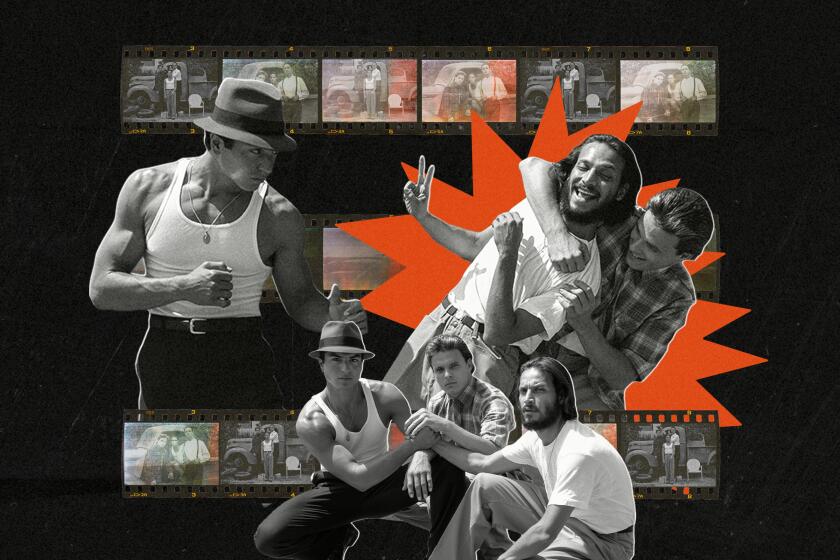Movie review: ‘Henri-Georges Clouzot’s Inferno’
Failed films make dynamic documentary subjects. “The Epic That Never Was” brilliantly detailed why the Charles Laughton “I, Claudius” never materialized, and “Lost in La Mancha” did the same for Terry Gilliam’s “The Man Who Killed Don Quixote.” Now you can add another film to that exceptional list: “ Henri-Georges Clouzot’s Inferno.”
Clouzot was one of midcentury France’s great directors, with successes like “Le Corbeau,” “Quai des Orfevres,” “The Wages of Fear” and “Diabolique.” His “Inferno,” which began shooting in 1964 starring Romy Schneider and Serge Reggiani, was supposed to be his masterpiece, a film that was going to change the face of cinema. Only it was never finished, and thanks to Serge Bromberg and a balky elevator we can find out why.
Bromberg, a major figure in the film preservation world, found himself stuck in that elevator for two hours with Ines Clouzot, the director’s widow, who gave him all the details of this ill-starred project. She also told him about the 185 cans of film containing the 15 hours of footage her husband had shot that had languished unseen for 50 years. Working with co-director Ruxandra Medrea, Bromberg determined to tell the story of how and why “Inferno” fell apart.
That lost footage, a major focus of the documentary, turns out to be as singular as everyone hoped it would. This is especially true of remarkably sensual sequences that showcase Schneider, images that are as flabbergasting in widescreen 35-millimeter as their reputation promised.
“Inferno,” however, doesn’t depend on those shots alone. The film interviews survivors of the production, including director Costa-Gavras, who was a young assistant director back then, and it shoots contemporary actors Berenice Bejo and Jacques Gamblin reading key scenes from the film’s script.
It also presents a vintage interview with Clouzot himself, whose thick eyebrows and ever-present pipe help project an image of piercing, focused intelligence. He talks about “Inferno” as a film intended to “dramatize anxiety,” to take a deep look at neurotic jealousy.
According to other interviews, Clouzot, like many filmmakers, was excited as well by the groundbreaking nature of Fellini’s “8 1/2” and wanted to use this project to help revitalize cinema by forging a new visual grammar.
The outlines of “Inferno’s” story were certainly conventional. Reggiani, a French stalwart whose credits include “Casque d’Or” and “Le Doulos,” plays the owner of a small hotel in the Auvergne who suspects that his wife, played by Schneider, is having an affair with a local pretty boy.
Apparently because of an agreement with Columbia Pictures, Clouzot had a considerable budget that he used to experiment with different bravura ways of cinematically conveying the Reggiani character’s increasingly disturbed and twisted state of mind.
These include Op Art-type trickery, lenses that deform faces in a funhouse mirror way, and a dazzling use of color inversion, which turned a calm lake blood red and tongues and lips a disconcerting blue. Even today, many of these images are striking, even haunting.
Also disturbing is the film’s evocation, apparent even in snippets, of the obsessive madness that overtakes the hotel owner. Based on a script so strong that one reader says just reading it created palpable anxiety, “Inferno” feels like it would have been the real deal. So what went wrong?
While no definitive answer is possible, the documentary convincingly lays out a number of contributing factors, starting with Clouzot’s nature as a perfectionist who was never satisfied. He obsessively redid shots, made constant changes to the script, drove the actors harder than they were comfortable with and treated everyone on the set as an extension of himself. It’s almost as if the act of trying to re-create madness made this great filmmaker a little mad. View the wreckage and marvel at what might have been.
More to Read
Only good movies
Get the Indie Focus newsletter, Mark Olsen's weekly guide to the world of cinema.
You may occasionally receive promotional content from the Los Angeles Times.







